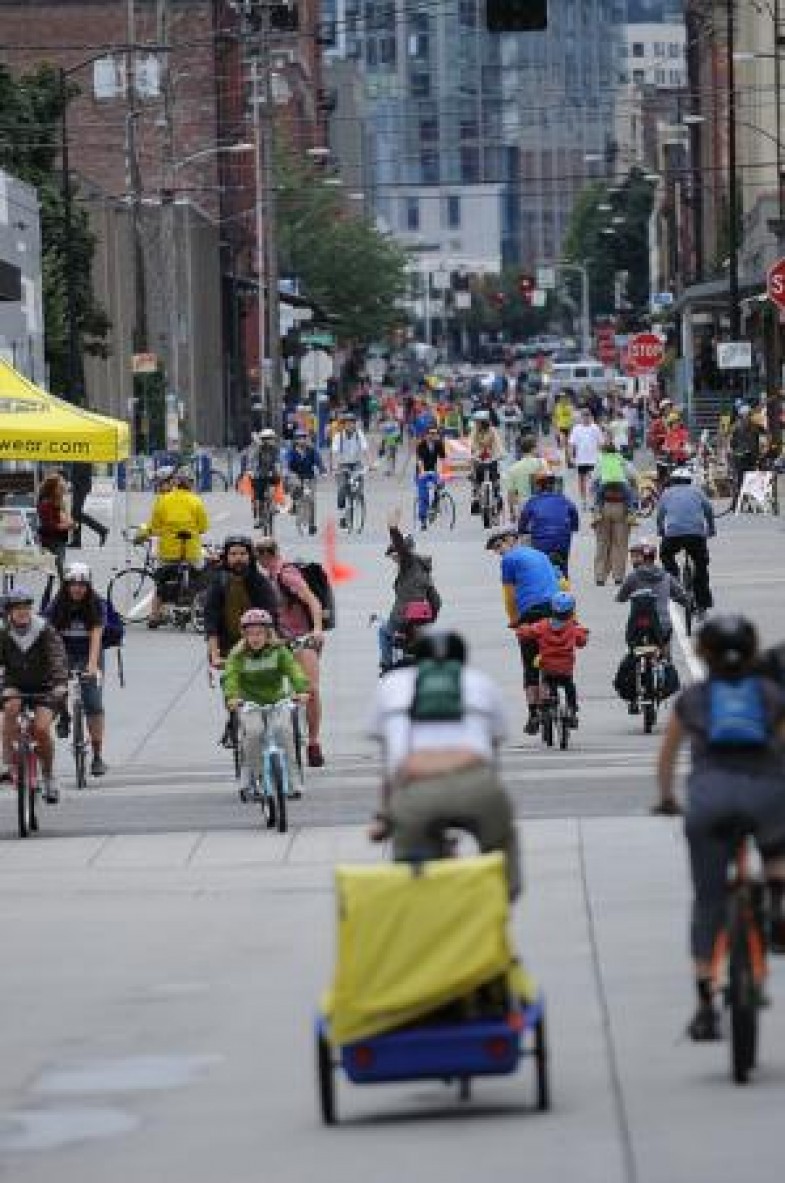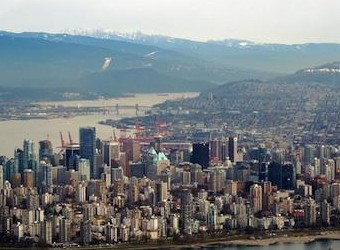Gas prices have zoomed past $3.50 a gallon for the second time in three years. So it’s more crucial than ever to find quick, enduring ways to free the U.S. from overdependence on oil.
Millions of Americans suffer when prices at the pump rise, because they have no alternative to driving almost everywhere they go. We need to create a transportation system that will not be held hostage by volatile fuel prices. The streets are a commons belonging to all, and we must level the transportation playing field between pedestrians, bikers, transit riders and motorists.
Here’s some good news: Over the past few years, simple infrastructure improvements (bike paths, lanes, etc) making it more convenient and safe for people to bike and walk have been constructed coast-to-coast. Cities from New York to Minneapolis to San Francisco have enjoyed 100 percent or more increases in the number of people biking to work, school and shopping.
Smaller cities from Greenville, South Carolina, to North Little Rock, Arkansas to Long Beach, California are now following suit. Creating better conditions for biking and walking is one proven innovation to cushion us from the economic upheaval of high gas prices.
But here’s some troubling news: much of the talk around Washington and state capitals this year is about eliminating or slashing these successful programs. In fact, Republican leaders in both the U.S. House and Senate are targeting bicycle transportation for zero funding. Senator Jame Inhofe (R-OK), a leading Republican on the Environment and Public Works Committee, has already declared that stopping “frivolous” spending on bike trails is one of his top three priorities for the transportation bill.
Even worse, On July 7, Representative John Mica (R-FL), chairman of the House Transportation Committee, called for the elimination of funding for all walking and bicycling programs, which he claimed “do not serve a federal purpose”.
People for Bikes is urging citizens to write their Congress members.
Slashing bike programs is penny-wise and dollar-dumb. Biking and walking comprise only 1.5 percent of the overall federal transportation budget, while they account for 12 percent of all trips made by Americans today.
Indeed, the entire price tag for more than 3,000 federally funded bike and pedestrian projects across 50 states last year amounted to less than half the cost of one highly contested highway project in suburban D.C. that opened this spring.
Bicycling has boomed during the past 15 years, illustrating how a small amount of federal funding has leveraged big results throughout America. And this was achieved through “bike-partisan” consensus.
In 1991, President George H.W. Bush signed new a new transportation bill that for the first time in history included federal funding for improvements in bicycling, walking and other transportation “enhancements.” While that term sounds like frills, in reality the program paved the way for many cities, suburbs and small towns to establish biking and walking as viable transportation options. Bill Clinton and George W. Bush signed new transportation bills in 1998 and 2005 with increased funding for biking and walking.
The results have been striking. The number of biking and walking trips made by Americans increased 60 percent during the last decade. This includes commuters on their way to work, but also many other folks who sometimes leave the car behind on errands close to home. Half of all trips Americans take are three miles or less, which can be done on bike in less than 20 minutes.
Over 20 years, the number of bike commuters in Portland, Oregon, has increased five-fold to six percent (12 percent downtown) on a public investment of $57 million (about $3.50 per resident per year). Everyone benefits from fewer cars on the streets, reduced congestion and less need for costly road and parking projects.
Bike commuters in Minneapolis have almost tripled since 1993, with biking and walking now accounting for 20 percent of all trips around town. Seventy-five percent of children in Boulder, CO now bike or walk to school thanks the national Safe Routes to School Program, another part of the transportation funding.
Beyond economic benefits, bicycling and walking also boost environmental quality and public health—which translate to considerable costs savings in federal and state budgets for Medicare, Medicaid and health care.
Biking and walking make far fewer demands on the public purse than driving, so it follows that government programs to boost the number of trips on foot and bike will be an important component of any cost-effective approach to transportation. A mile of new urban freeway costs $46-100 million, according to former House of Representative Transportation chairman Jim Oberstar, while a mile of 12-foot-wide bikeway costs $125,000.
With gas prices up, health care costs skyrocketing, political instability continuing across the Middle East, and more American families struggling to pay monthly bills, low-cost projects to help more people walk and bike offer a wise investment in the commons. In fact, Republican and Democrats alike should support these policies as patriotic, fiscally responsible and forward-looking.
This was updated from a story that first appeared on the “People for Bikes website”:http://www.peopleforbikes.org/








